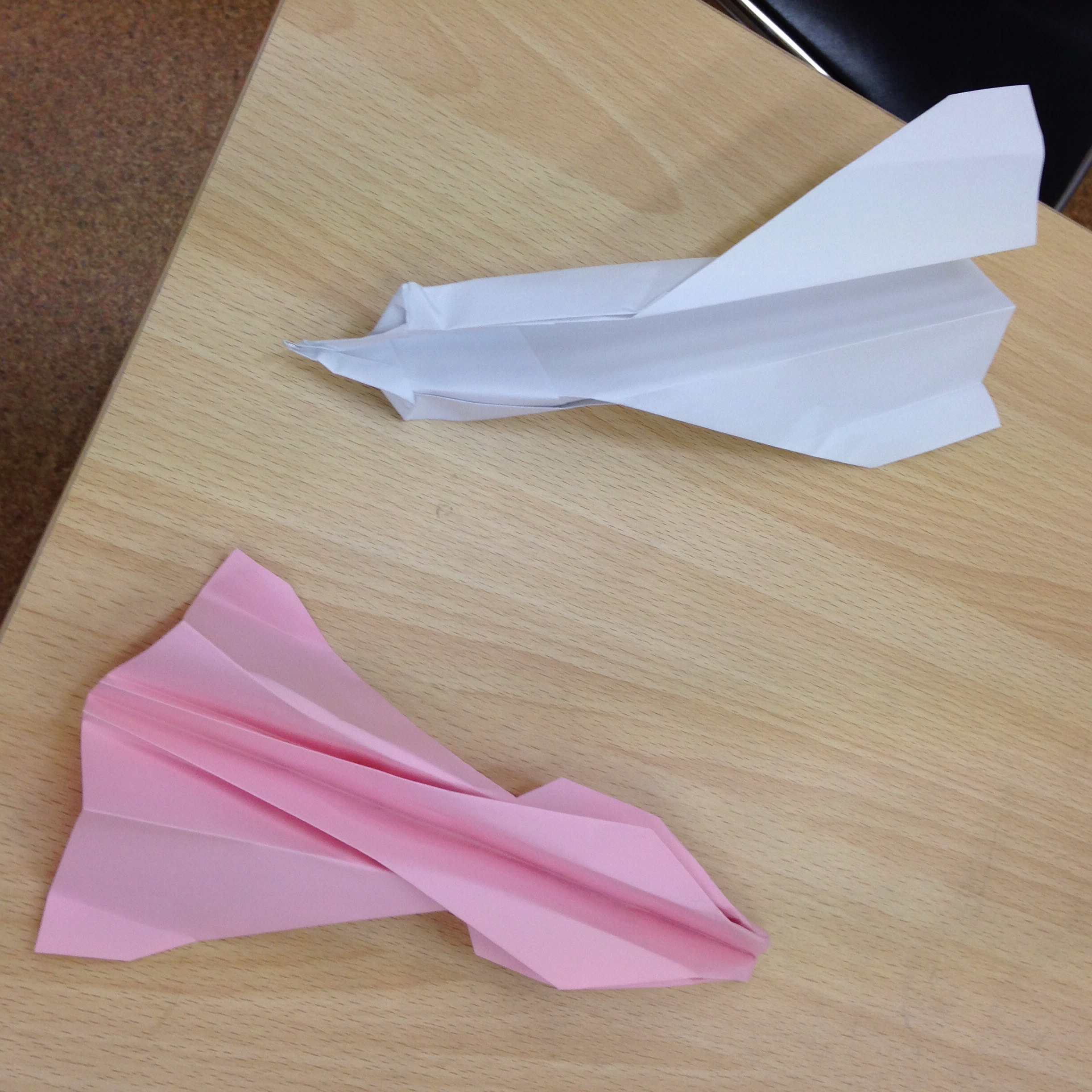Who doesn’t love paper aeroplanes? I mean apart from the person who has to tidy them up?

This is an easy lesson to do and could take about an hour to two hours depending on how many plane types you teach.
I took different sets of instructions from www.paperaeroplanes.com and told my students to practice making the plane. I made sure to tell everyone they would be teaching how to make their plane later.
The vocabulary needed was in the reading but be aware that inattentive students may ignore it. I would have them read and copy out a list of ten or so useful vocabulary items if I did this again. Focus on form was given as we went.
There was the opportunity to ask meanings of words as we went along and the instruction task was passed if planes were made and failed if they didn’t.
Plane types were tested for speed, height and distance. Students then wrote up a short report.
As extension work, we tried folds to the wings and fuselage to see if the planes would turn or roll.
The students loved doing this and everyone was speaking English all the time. There was even more negotiation of meaning than usual, too.
Month: May 2016
Materials/Task – Family tree puzzle

I made this to have learners build their family member vocabulary. A lot of elementary learners know the basics: ‘sister’, ‘brother’, etc. but not ‘nephew’, ‘niece’ or ‘~-in-law’.
I followed it up with learners giving easy definitions in English (and Japanese or Chinese if required1), quizzing each other using different relationships, and then writing about their own families.
I used very Anglo-Saxon names. Feel free to change them as and if you feel the need to. It has a Creative Commons license as usual.
Available as PDF and editable PPT.
1
Seeing as my learners can’t use L1 in their tests I wanted them to build upon extremely basic knowledge and substitute a possibly forgotten word with a half-decent explanation.
Winging It – Not a skill to be sniffed at

First up, let me make it absolutely clear – planning lessons, at least in your head and preferably a few jottings on paper, before you go into the classroom is highly recommended. Even with Dogme you’re thinking about your likely reactions and you probably know the learners so have a good idea of needs. However, all of us at some point, and quite often for a few of us, have to wing a lesson because of any of the following reasons:
We are covering a lesson at the last minute with no cover work left by the regular teacher.
There are unexpected occurrences that mean the planned lesson (or planned tea break) can’t happen and you need to do something, preferably with a quick decision.
IT has failed or materials are not available.
What can you do?
If you have a textbook, you can do one of the other units. This will likely be a choice of nothing or the worst unit in there. Pay lip service to it by generating vocabulary from pictures in there and then set up a task or activity related to that theme. My favourite lesson when I worked for a rubbish school was an At the Airport unit which became a roleplay with feelings and personality eccentricities. I did this by selecting the only lesson a last-minute addition to the lesson hadn’t already studied.
Otherwise, you can Dogme your lesson and start a conversation. Think at each stage, what can the learners do? What can they almost do? The almost stage is great – try something that will enable this to be further developed.
Language?
This gives you the ideal opportunity to focus on weak points of language that manifest themselves in learner output. It could be grammar but it doesn’t have to be. How often do you think students get help with pronunciation? How about use of reference to sound more natural and concise? Don’t just pick a random grammar point for the sake of it. It’s nice to have gone in winging it and come out having taught something a bit unusual. I’d also say, don’t be afraid of going wide with the language focus in your lesson instead of deep with one thing. Students like it and you can always suggest further study on that point for homework (such as finding more examples online or from a newspaper or something).
Reflect
The old chestnut is, the best lessons we teach are ones we didn’t plan. Write it down: what would you do differently? What worked well? Could you substitute any part into another lesson plan to make it better? If it was without a book, your students might appreciate time to talk with each other. You’ve had a really good opportunity to teach reacting to students and not worrying about keeping to a plan. It might have been a bit rough but what were the redeeming features?
Any other tips or concerns for winging it? Leave them in the comments.